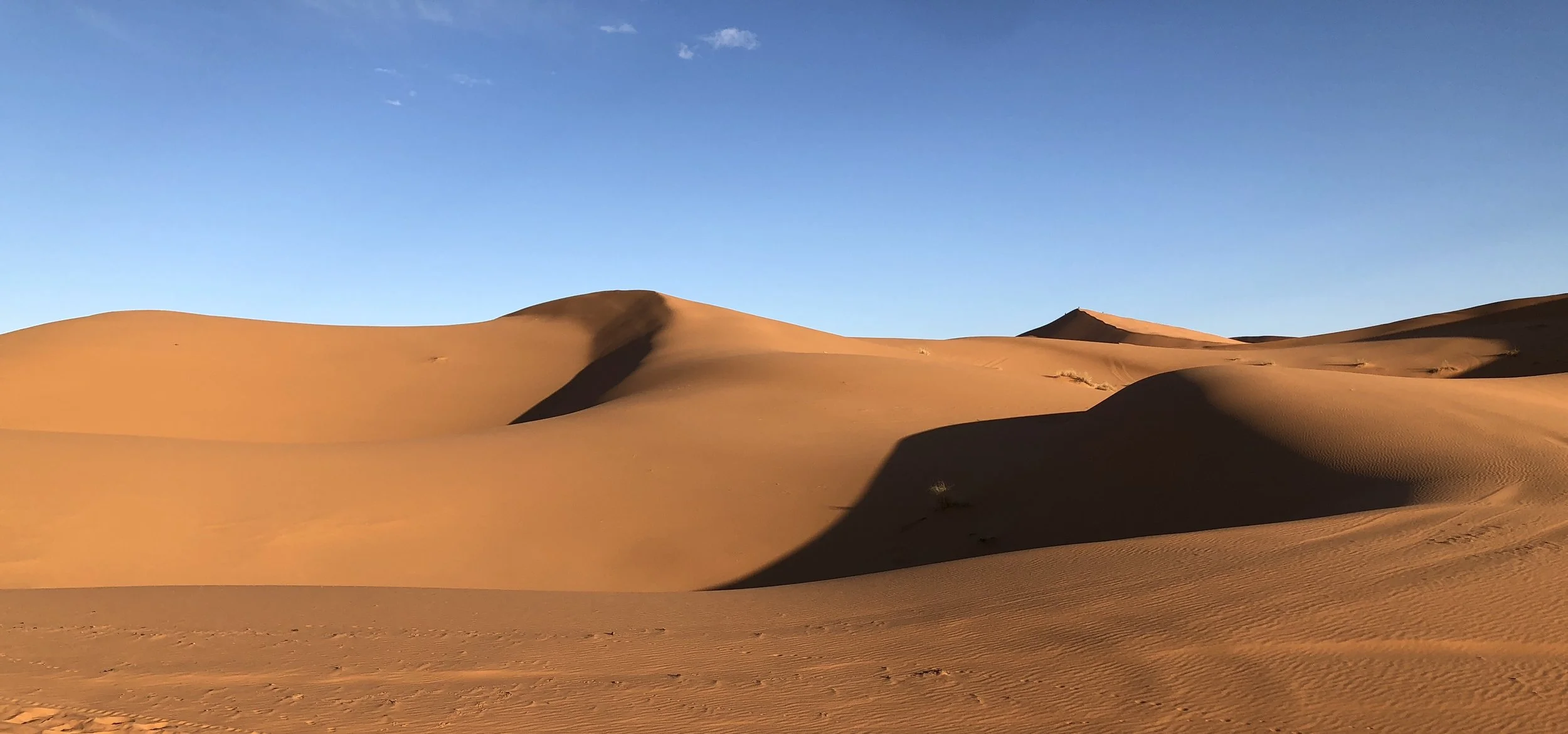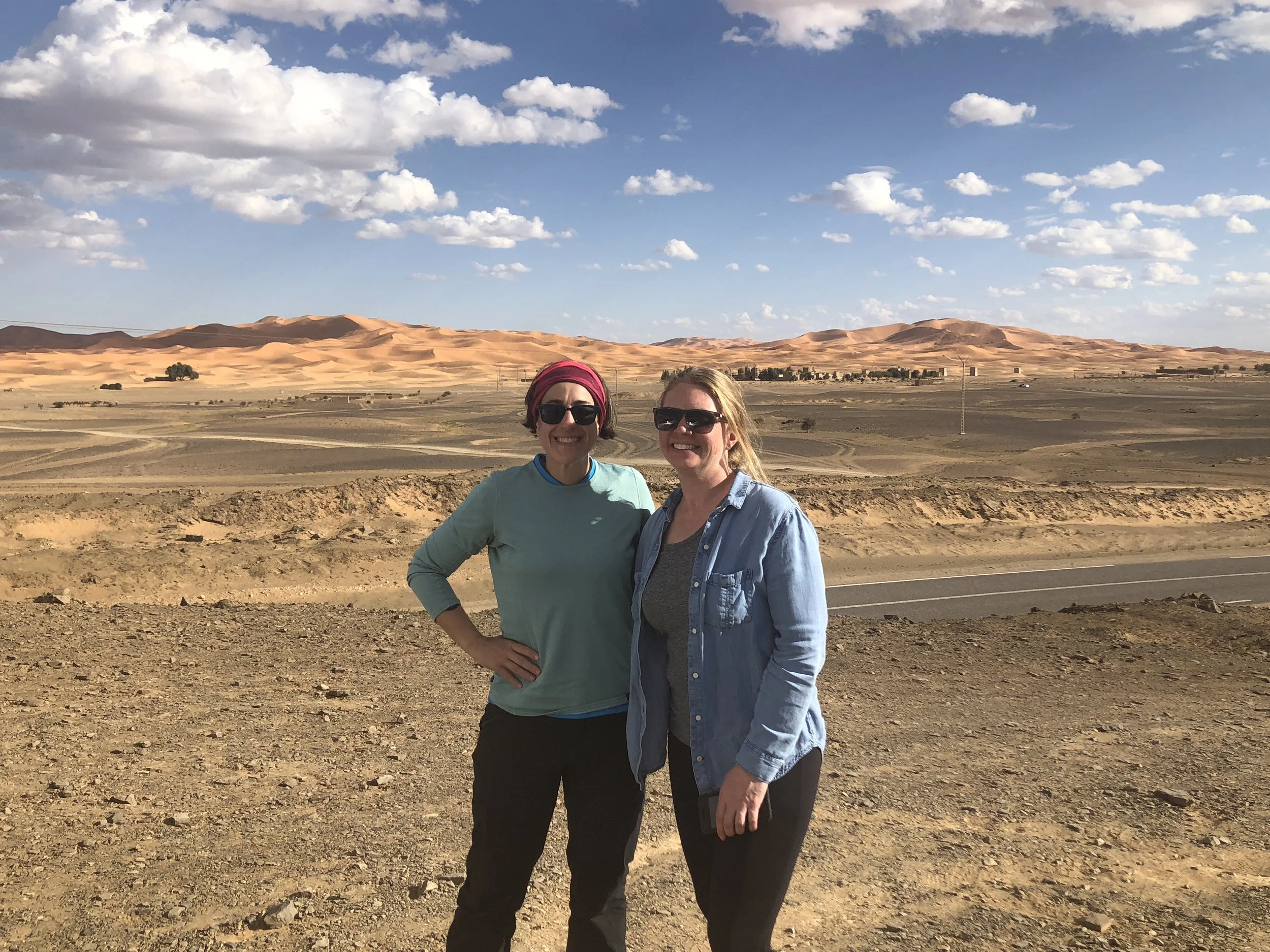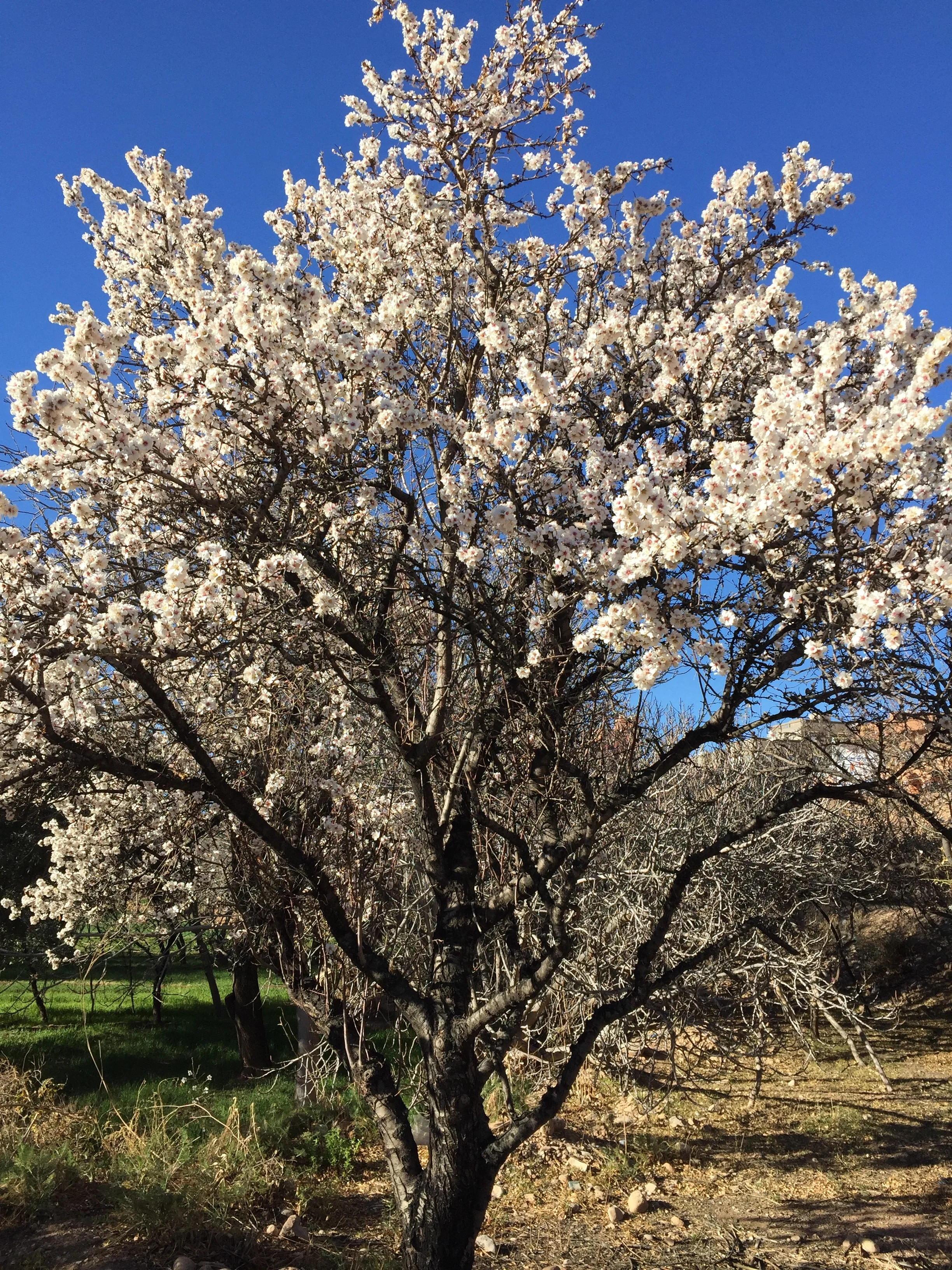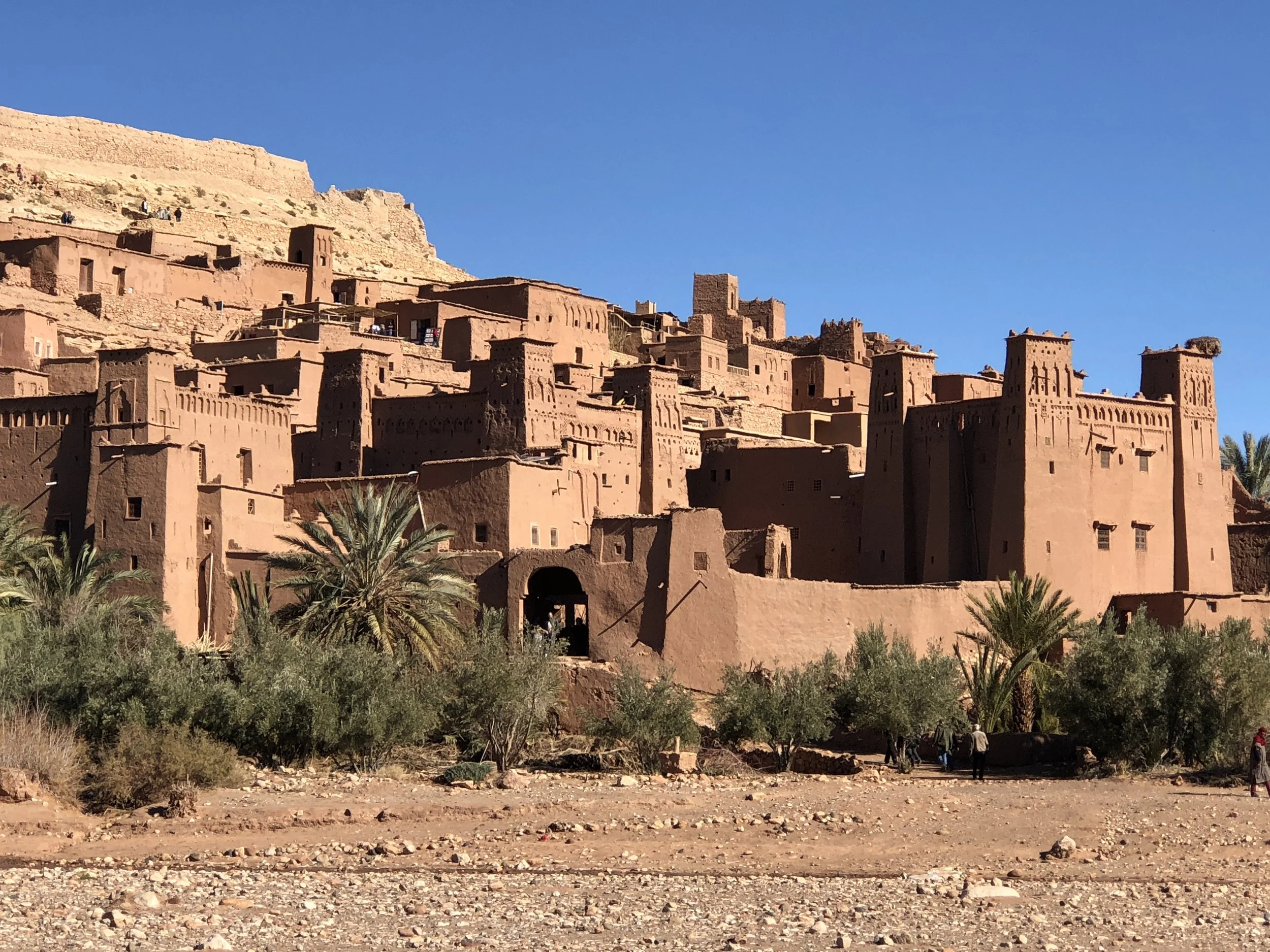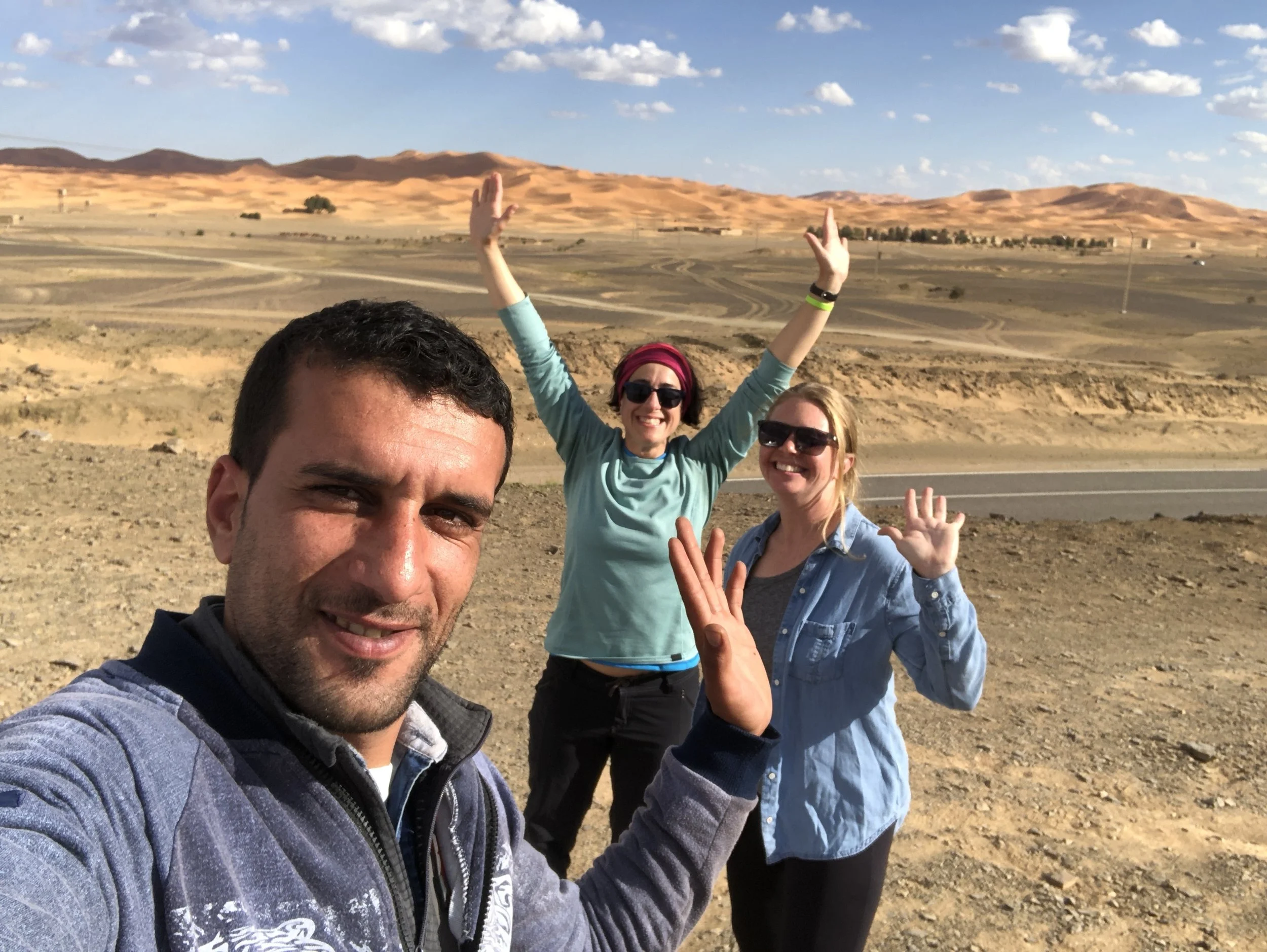Scenes From A Desert Road Trip
Skirting the southern fringe of the Atlas Mountains, Morocco's geography changes dramatically. Snowy high peaks melt into flat desert and if you keep going far enough, that hard-packed arid expanse loosens into saffron-colored sand dunes.
Last month, Liz and I loaded our backpacks into an SUV and our guide-driver Rashid cranked up an awesome music mix as we headed down from Imlil to cross over the Atlas Mountains and head to the desert for a four-day road trip. The landscape was ever-changing but constantly mesmerizing.
These were some of the memorable moments:
- Berber villages are unusually beautiful. Their architecture is somewhat uniform -- square angles, straight lines, simple rectangular forms punched with many small square windows. The buildings seem attached to one another, extensions built onto additions. Their colors harmonize with each other and their landscape better than any southern California homeowners association rules could enforce. Rusty and muddy reds prevail, along with peachy, earthy, taupey hues. The oldest houses are built of mud bricks, newer ones of concrete.
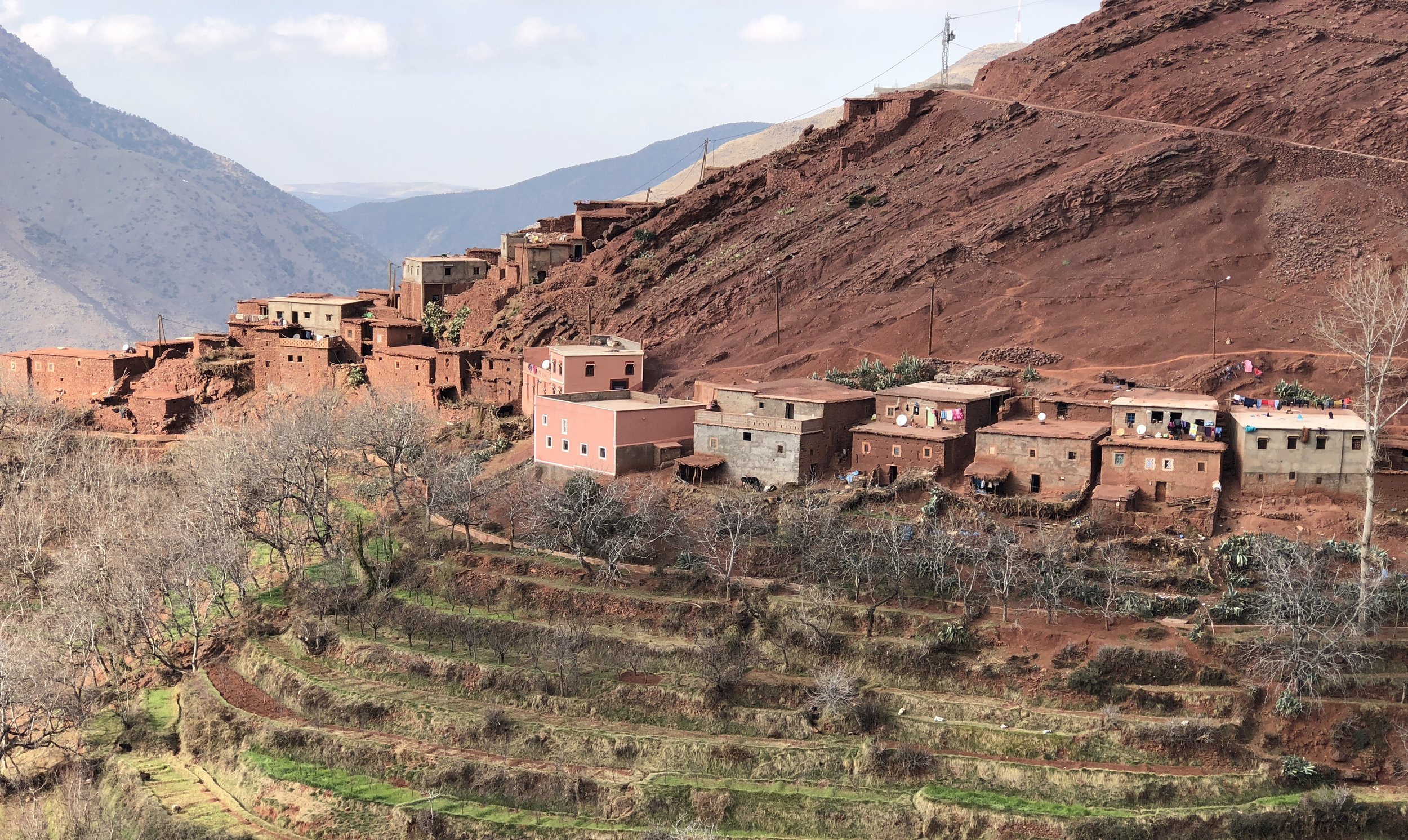
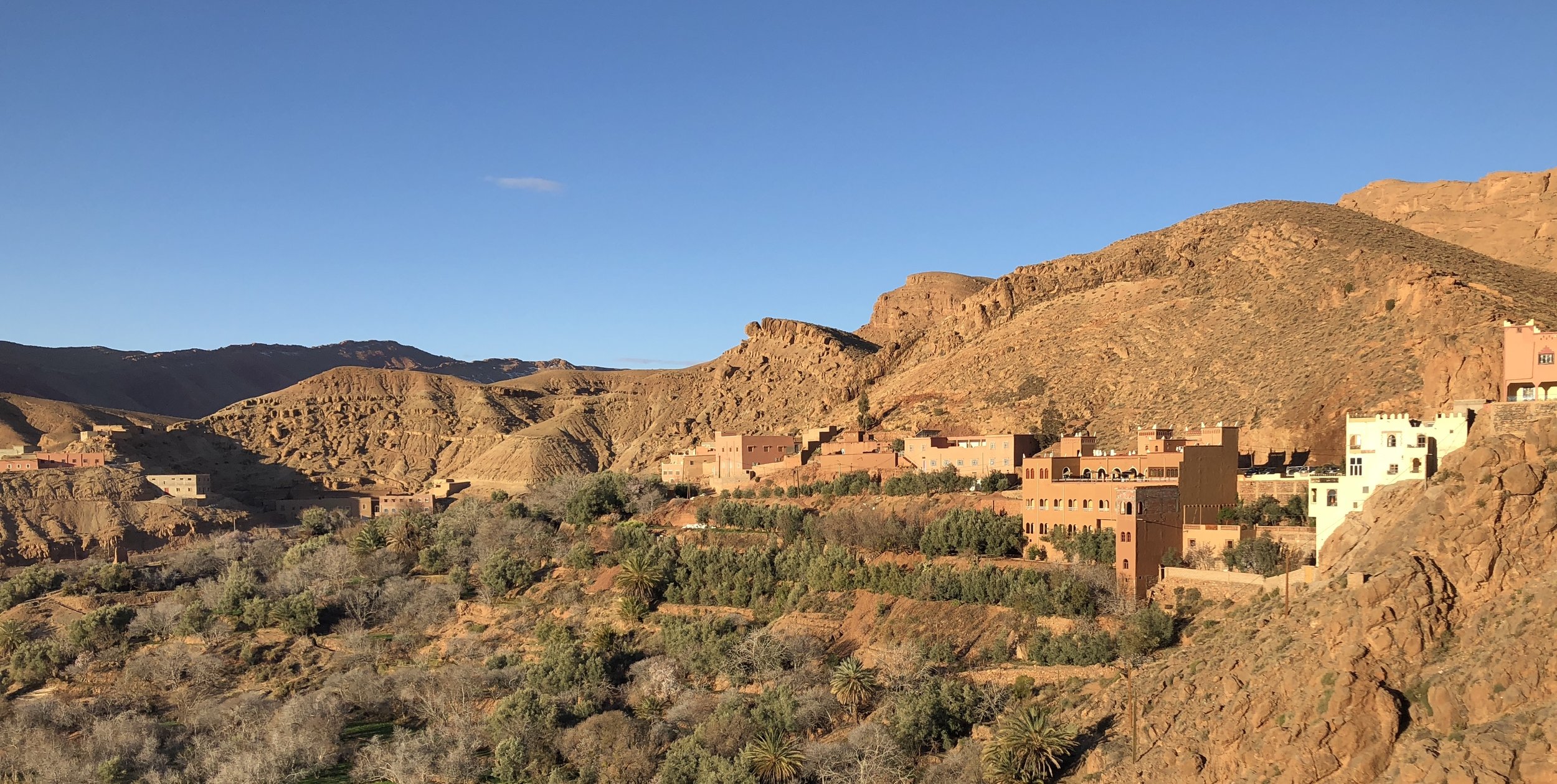

- Water! Nomads and civil society have created ingenious irrigation systems out in the empty desert. We stopped at an active well, dug by the government, where Rashid pulled up a basket of water and showed us how nomads pour it into a concrete trough to water their animals. Nearby, we visited a demonstration well that explained how it used to be done: an underground aquifer tapped by hand-dug wells, marked by earthen mounds built side by side across the desert. Walking through the underground tunnels that used to hold water reinforced the preciousness of the resource.




- The Dades and Tougda gorges are carved by water and millenia, and now are marked by winding roads and massive rock walls. Pockets of palmeries nestle into valley floors here, groves of palm trees heavy with dates that give the red landscape an unexpected shot of green.
- Looking at the valleys as a catchy Moroccan pop song bares from the stereo.
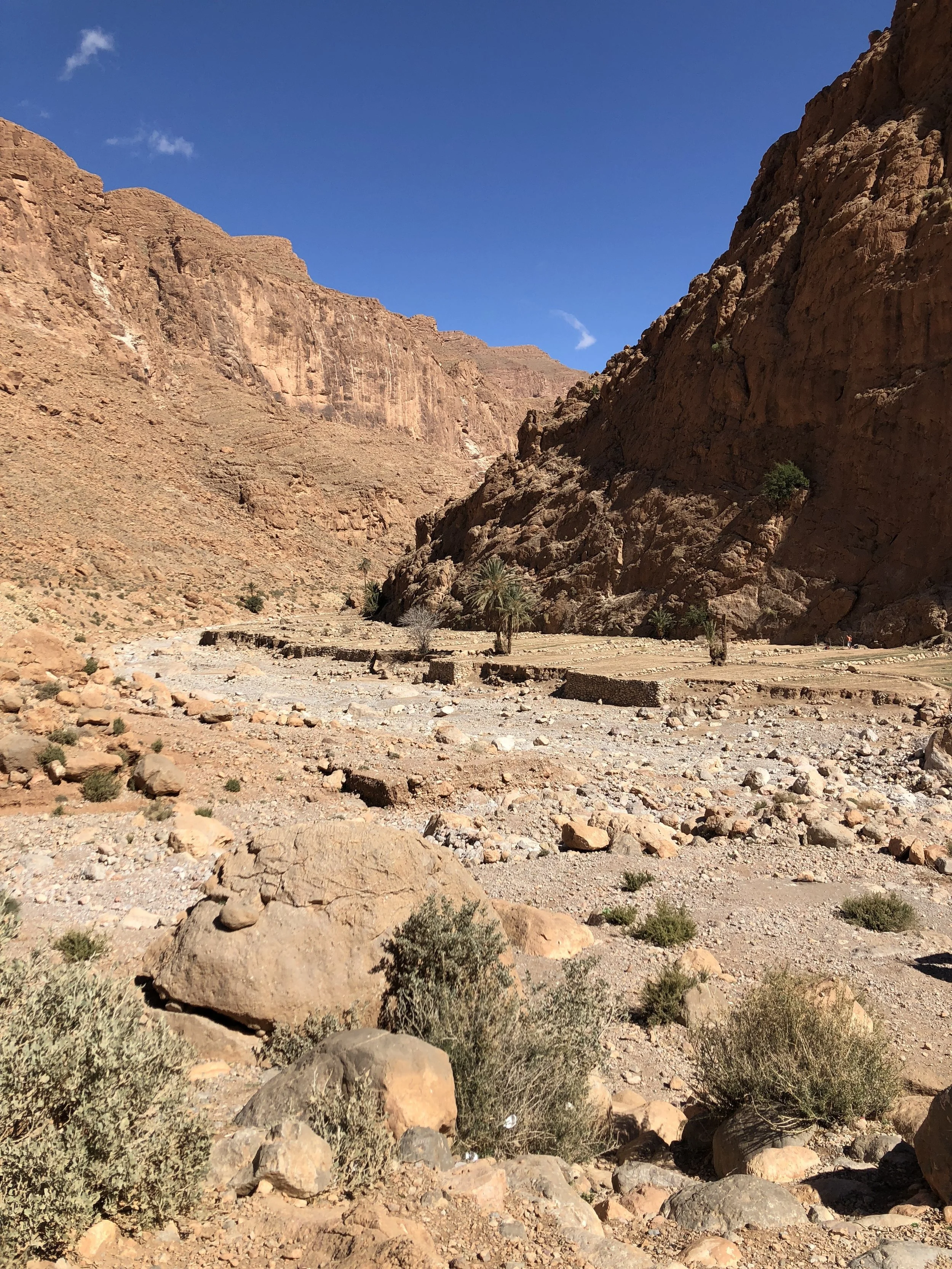
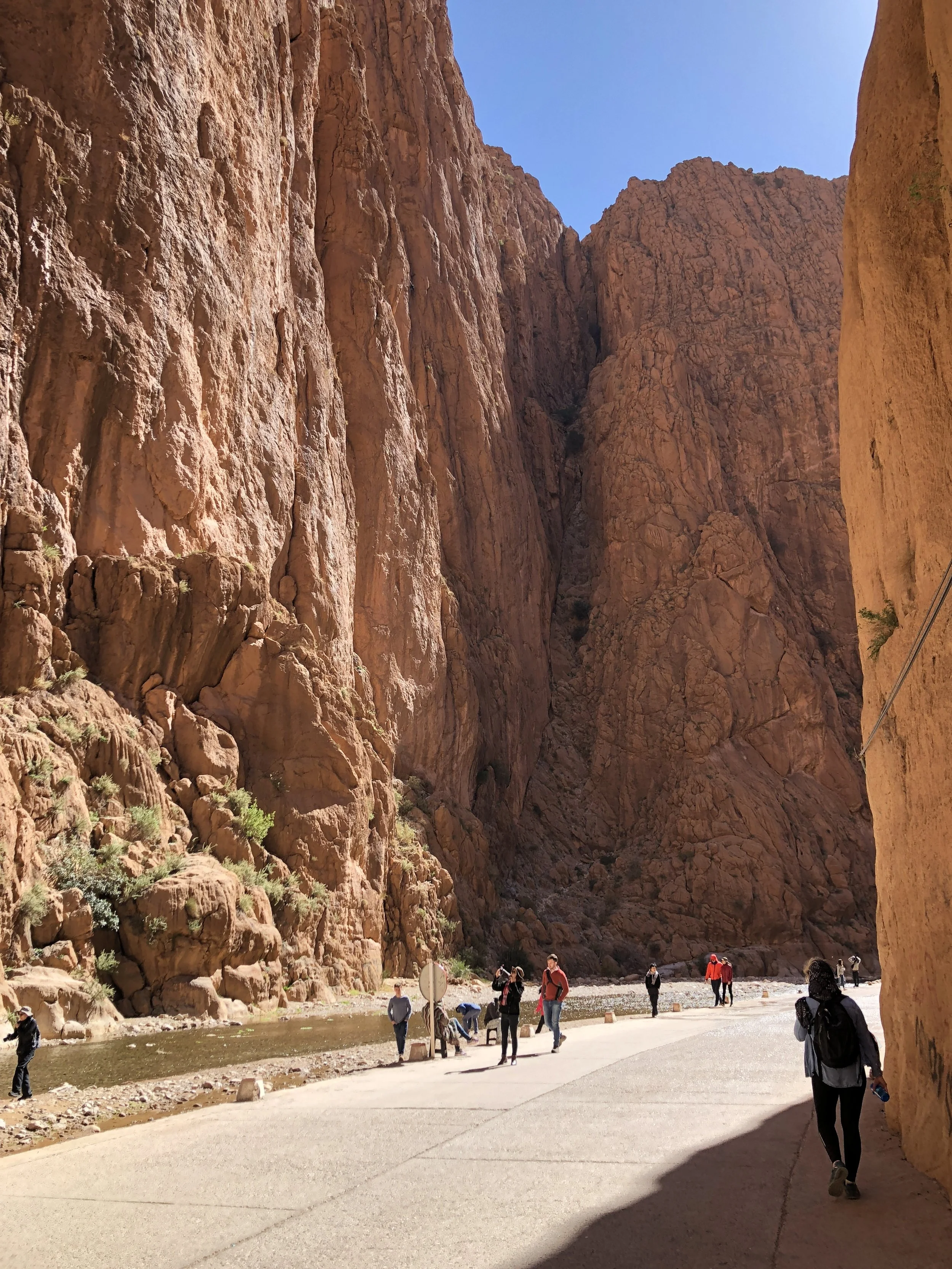


- Encountering the first truly offensive tourists we'd yet to meet. Twenty-something and French (neither of these is an indictment), they were a large group that slept roadside in unkempt camper-vans. We were horrified when they stumbled out in their underwear, scratching themselves and yelling at each other. I would think that if you were visiting a country that your country used to colonize, you would make an extra effort to be respectful.
- Riding camels across the sand dunes at Merzouga -- more on that in another post!
- D'raa Valley, framing Morocco's D'raa River, is an astonishing panorama of rock formations, valleys and vistas. The forces that shaped the land here left scars from their intensity, such that the rock walls seem to betray a fluidity of movement within them. Completely stunning.





- In one town, we were stopped in a flowering almond orchard and noticed the nearby call to prayer sounded unusually melodic, prettier and more soulful than the calls we'd become accustom to. A bit later we learned it was a funeral service. As we drove through town, we watched a procession of men walking behind the ambulance that carried away a loved-one to be buried.
- The Berber villages have a narrow palate of colors, save for one specific building: the school. Driving through towns, we could spot any school from a distance - the building and surrounding walls were always painted a riot of colors, brights and pastels.
- Rally cars! Out of nowhere, we saw across the empty flat desert trails of sand whipped up by tiny little cars racing each other to a checkpoint. This off-road race in little compact cars is apparently a thing.
- Ourzazate film studios, so entertainingly odd! The ruins and remainders of Hollywood and Bollywood movie sets stand surrounded by real desert landscape. Walking through the sets was a quick trip through pre-annexation Tibet, ancient Egypt, ancient Rome, medieval Europe. Everything is made of fiberglass and scaffolding, and the peeling paint gives the fake scenery an added layer of unreality. (I was reminded again that I am the only person in the world who hasn't watched Game of Thrones, which has shot scenes here.)



- The French kids again! We recognized them immediately in Ourzazate by their vulgarity and swagger. Wandering through the film studios, they hollered to our guide, "Hey, you a guide?" We were totally delighted when he looked at them and said, "No."
- Driving out of Ourzazate into the desert mountains as "Despacito" blares from the stereo.
- There is a place in Morocco called Ait Ben Haddou that you will find on any guide book's must-see list. I think it was a photo of this kasbah that formed my first distant idea of what Morocco would be like. We arrived there late in the day to see the sunset leave the valley in a cool shadow, and the next morning we climbed through the mudbrick stairs and alleys of this ancient fortress. In its heyday, an entire village lived and toiled here, protected by a chieftan. Most families long ago moved across the river into new housing, but a few still live and work among the UNESCO-protected remains of the original kasbah.
Rock the kasbah: Ait Ben Haddou.
- Kasbah Telouet is just down the highway from Ait Ben Haddou, and a totally different experience. Whereas Ait Ben Haddou looks deserted, Telouet is visibly in ruins. But its broken walls and crumbled exterior conceal astonishing rooms that evoke the fortress's past grandeur. Tiny ceramic tiles are fitted together into mosaics that cover walls soaring 30 feet above. Intricately carved wooden ceilings and door frames are painted in such detail that I can't imagine how tiny the brushes must have been. Sunlight streaks in through the windows, illuminating the tile and stone floors with a dull glow. It is easy, easy, easy to sit here for a quiet minute and imagine what life must have been like when these rooms were alive with courtesans.
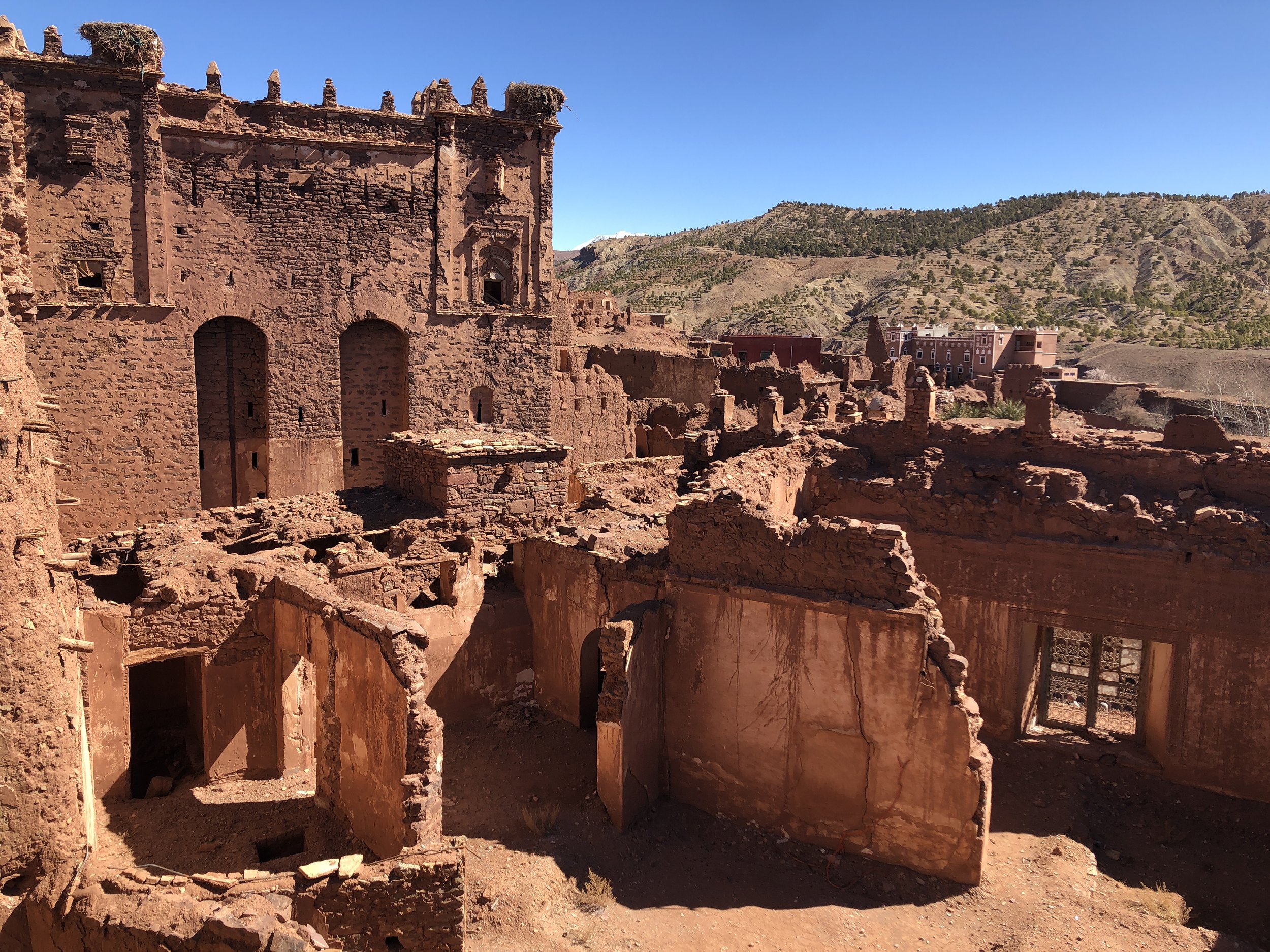
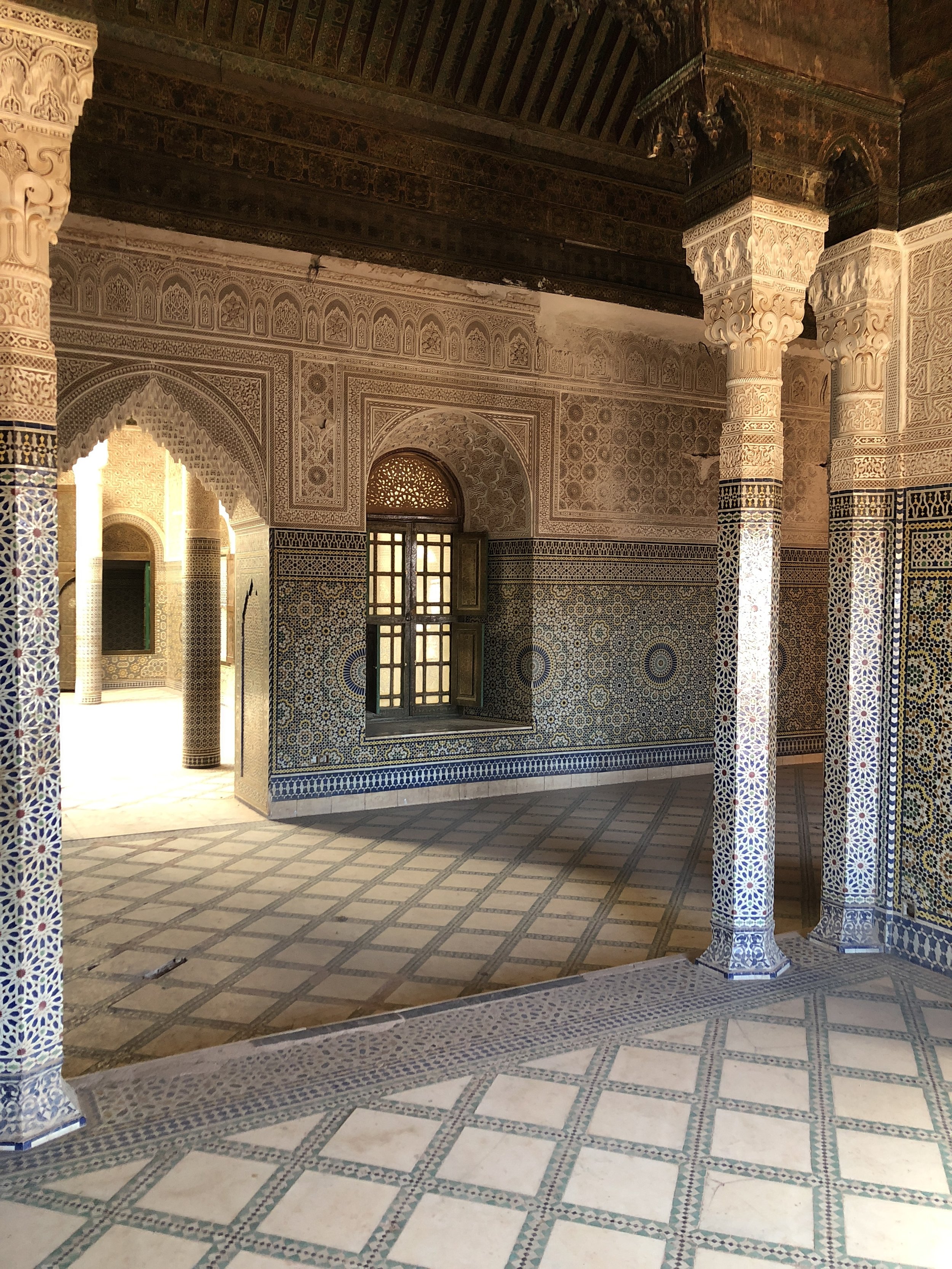

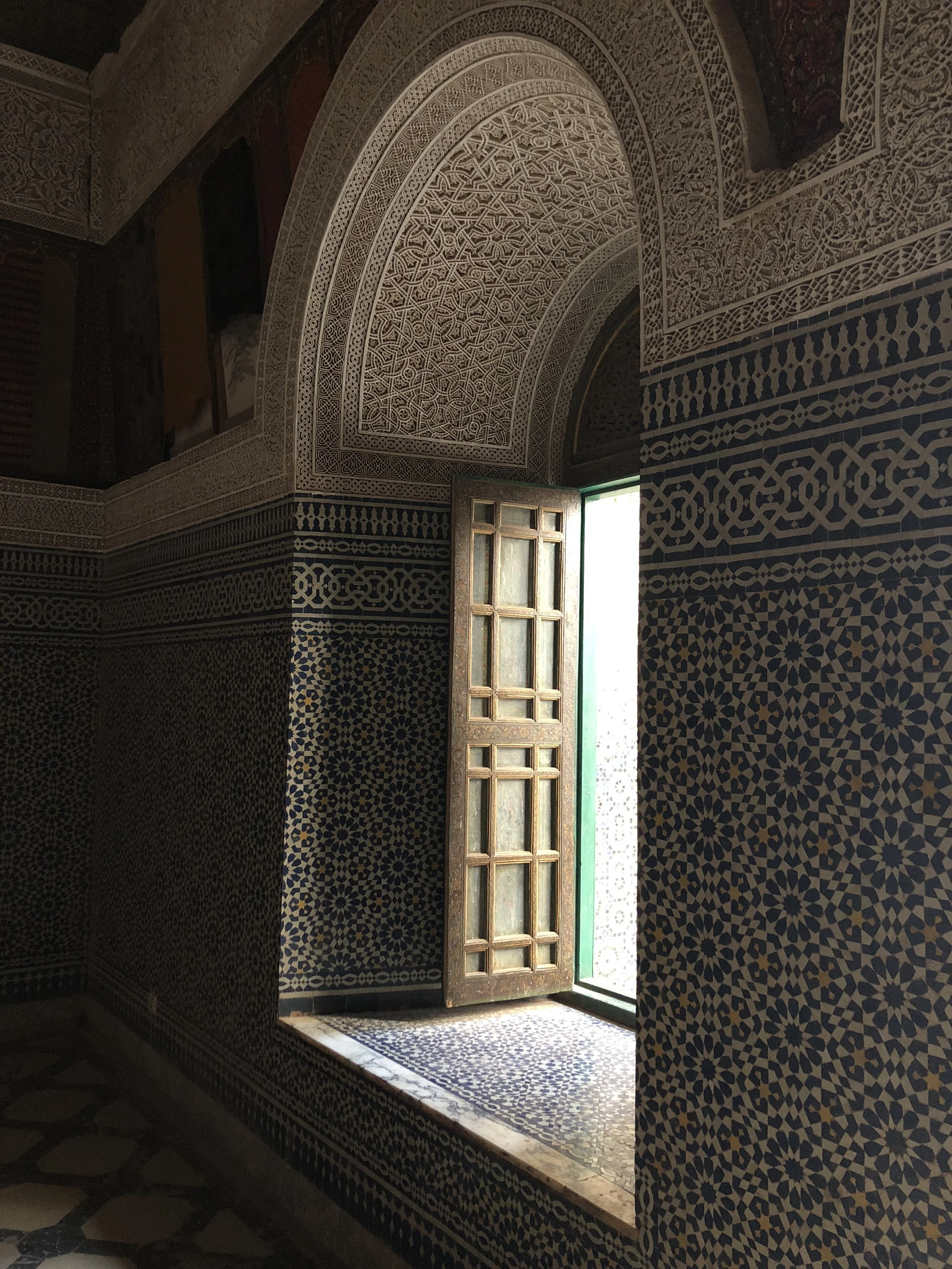
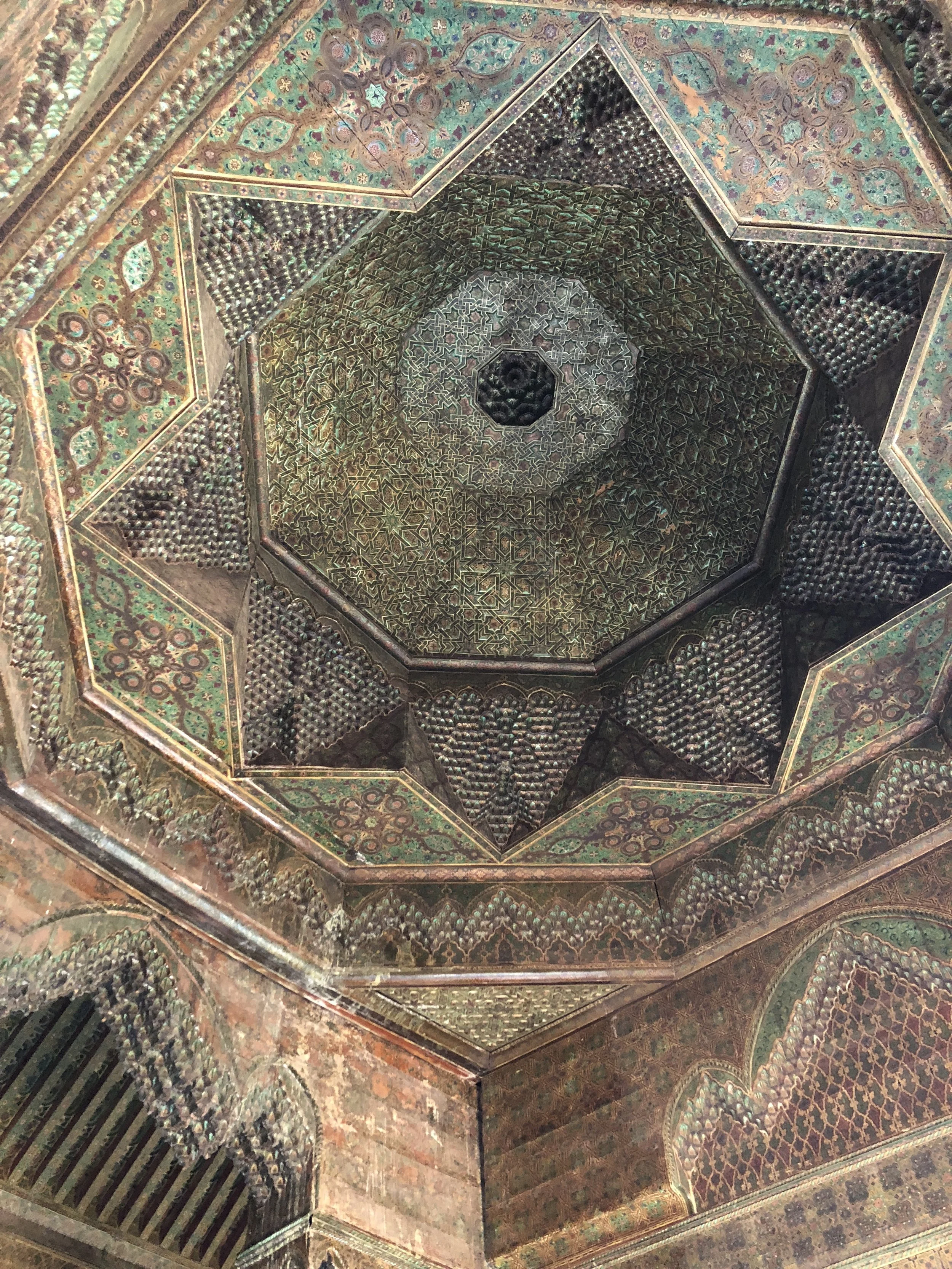

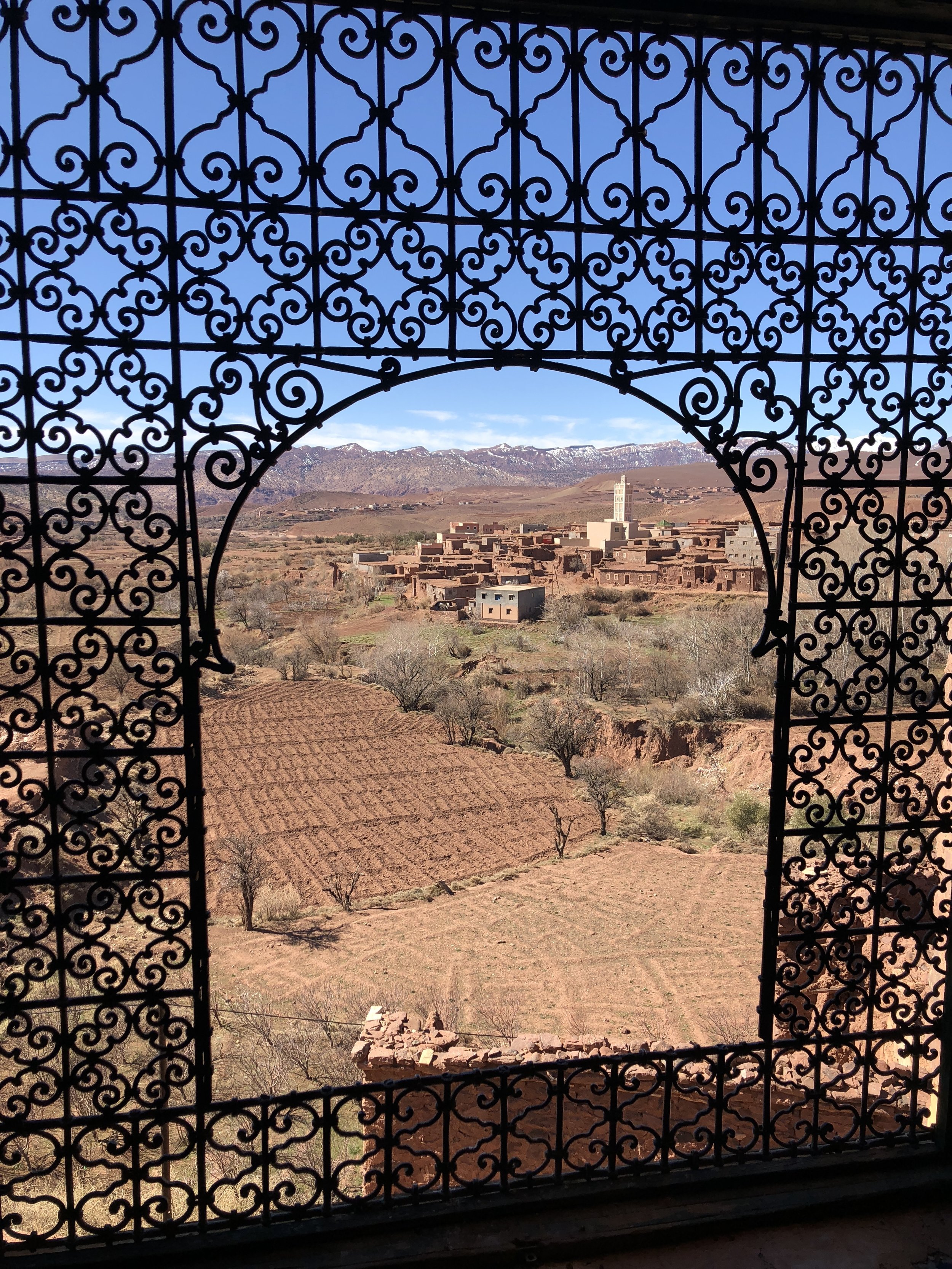
This was the third big road trip I've taken since I've been traveling, and the wild desert scenery and great company made it unforgettable.
